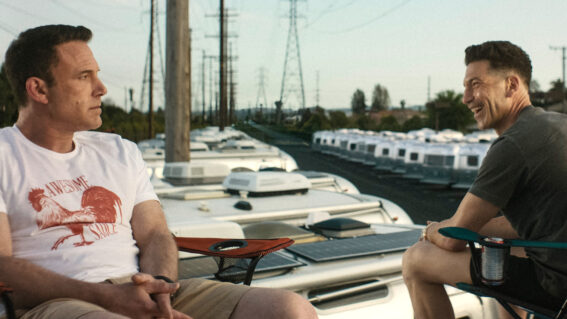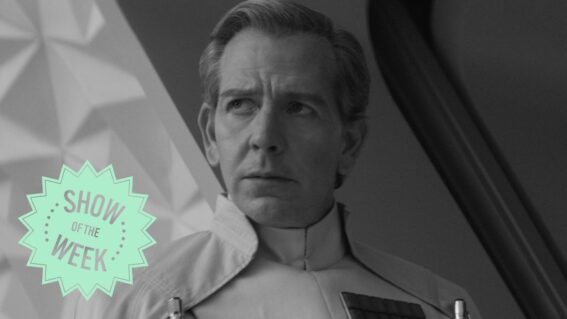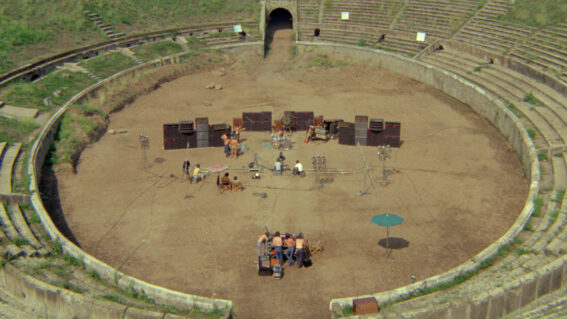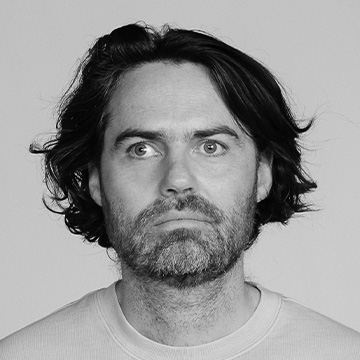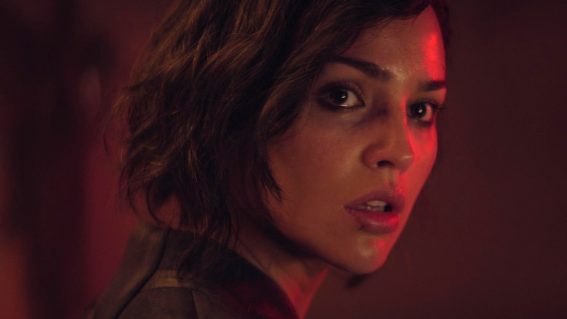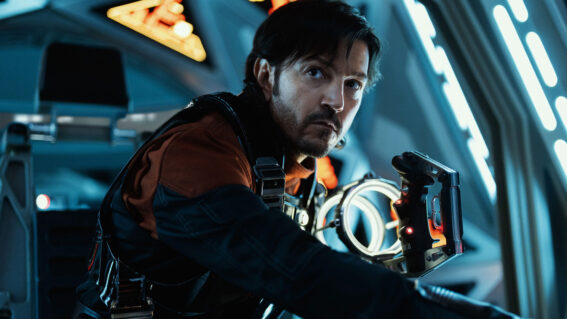Interview: Jim Henson Legacy’s Craig Shemin talks Retrospectacle
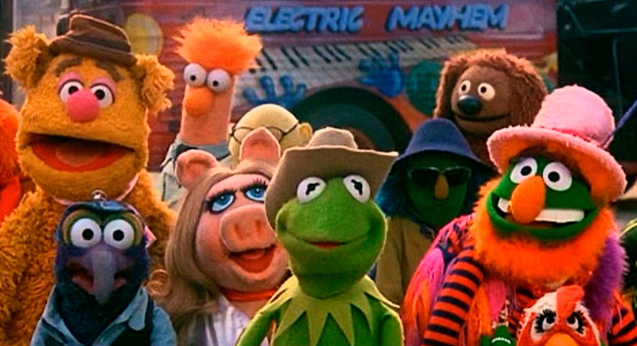
FLICKS: With your role at Henson, I suppose you’re in touch with different communities of fans and enthusiasts all around the world. How often do you get out to see the different groups of fans worldwide?
CRAIG SHEMIN: Well, we do regular screenings in New York at the Museum of the Moving Image where we have a permanent Henson exhibition. So we see a lot of fans there. And then we’ve done, in the past, screenings and touring exhibitions. And a few years back I did get to go to Melbourne, Australia to do a screening series. It’s always great to be able to share a lot of this stuff with the fans. And we try and mix in the popular films and TV things with stuff that people may not be as familiar with.
It’s a great, rare opportunity to see classic feature films on the big screen. That in itself is a real treat. But looking at some of the compiled parts of the film programme, there’s also some really fascinating stuff to dive into. What’s it like putting that together, and how extensive are those archives?
Well, Jim Henson kept a lot of stuff. And over the past few years, what we’ve been doing is going back to the original films and shows that we’ve been finding. So there’s stuff that we’re going to be showing in New Zealand very few people have seen, and we’ve only recently discovered. We’ve been doing new high-definition scans of a lot of this material, and, in fact, in New Zealand, it’s going to be the first public showing of a new restoration of Jim Henson’s Academy Award-nominated short film from 1965, Timepiece. We’re in the process of doing a restoration on that. We have sort of an in-progress version. We’re still fixing a few things, but we’re going to be showing that restoration in public for the first time.
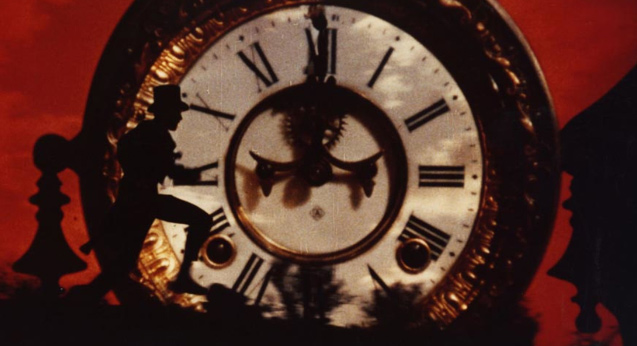
For you personally, what does it mean to work with this vast resource of content?
It’s really special. I came into Henson as a fan. I was a big fan. I had an internship with the company and got to meet and work with Jim Henson a little bit before he passed away. So, I love being able to work with the people. And some of the people who are going out in New Zealand are people that I first knew about from watching them in documentaries, people like Dave Goelz, and Bonnie Erickson, and Karen Prell. These are people that I grew up as fans of and then got to work with on various projects. And it’s a really special thing that all of us would do this for The Jim Henson Legacy. We do it for the love of Jim’s work and to try and make sure that people remember that all this stuff was started by one person.
Jane Henson, Jim’s wife, started our organisation, The Jim Henson Legacy, a nonprofit. She knew that the various corporate entities would keep the characters going – Sesame Street is about to start work on its 50th season, and The Muppets still do stuff for Disney but Jane Henson felt it was important to make sure that Jim Henson’s name was still attached to all of this stuff. Disney doesn’t really associate The Muppets with Jim Henson. To be perfectly honest, they don’t have the rights to use Jim’s name in that way. And Sesame Workshop doesn’t use Jim’s name in association with Sesame Street. So it’s up to our exhibitions and screenings and outreach events like this to keep Jim Henson’s name connected to his characters and that’s one of the goals of our organisation.
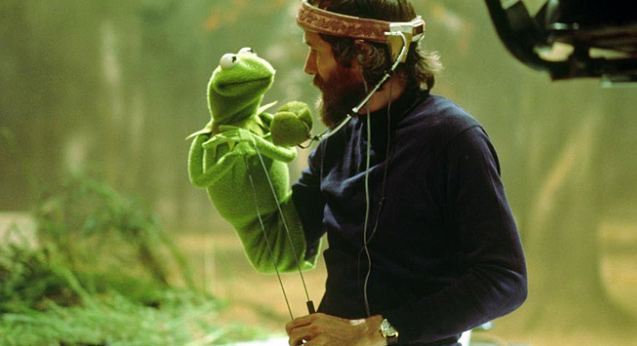
It feels to me that the more time passes, the more the characters exist as intellectual property and may be further away from Jim’s improvisational and technical invention side.
Yeah. It’s something that we try and feature in the film side of things and also in the live concert that we’re doing. That the whole idea of what Jim really pioneered, the television puppetry world, this is one of the few non-human character worlds that exist in real-time. It’s hard to describe… we’re doing a concert with Bret McKenzie and The Muppets. If these were Pixar characters, you couldn’t accomplish that. You could have people in Pixar character suits – and do Pixar on Ice or whatever – but the characters that will be on stage in Wellington with Bret are the same characters that are on television. They exist in three dimensions in the real world, it’s not like a cartoon.
So, I think the idea that these are real characters that exist in a physical plane is really unique and that, like you say, the spontaneity of the ad-libs and stuff that Jim brought to it, it’s a different world now. Because the stuff is owned by different people, the Disney company, Sesame Workshop, Jim Henson Company are the three major owners of the different characters. And it used to be that there was one person at the center of all of that, Jim Henson, who had the creative vision and who sort of had the last word. And now it’s more like executives getting together and saying, “Well, where do we take the characters from here?” It used to be Jim saying, “I think I want to do this next.”
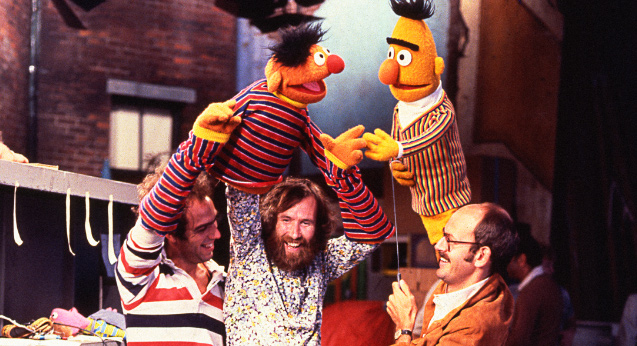
In a way, is it a positive thing to you that you don’t have to worry about that so much as working with the set of material that he had left behind?
Well, I like to do both. I mean, when we present our historical screenings, we are not saying, “Boy, this stuff is great and what’s happening now isn’t great.” We think there’s room to celebrate both the history and the future. And my wife works on Sesame Street, she’s a puppeteer on Sesame Street and they’re still doing very interesting things. It’s different from the way it was when Jim Henson was working on it when it began, but that doesn’t mean it’s better or worse, it’s just different. And I like to work with historical stuff but I also I’ve been writing the script for this concert with Bret and to be able to come up with new material for these characters is always a joy. It’s a more challenging world than it used to be because I spent 14 years as a writer for the Henson Company and there was one company. When I was there the Jim Henson Company controlled The Muppets, The Fraggles. There were fewer people to deal with in terms of getting a script approved. So now I have to come up with a script that meets the wishes of more different departments and more different IP owners as it were.
The fun part is getting to work with these characters again. I don’t work for the company on staff, but I come on and do projects from time to time. I wrote for Disney. I wrote The Muppets Character Encyclopedia. I’ve done some web shows for Disney. But what I really enjoy doing are concerts like what we’re doing in New Zealand, and I also wrote a concert that we did at Carnegie Hall in New York, where it was a similar thing where we brought all the different character groups together. That’s what gets hard, is that the Jim Henson Legacy, and [NZ organisers] Square Eyes, and the nonprofit world is the only place where we can unite all the different character groups because they are owned by different companies with different goals and missions. So it really takes a nonprofit to unite Disney and Sesame Workshop and the Jim Henson Company and be able to present a show with characters owned by all three of them in a way where all of them are okay with it.
We’re very lucky to be given an opportunity to see that in a couple of weeks time. I imagine that lots of people worldwide want to do stuff with Henson characters all the time. Was it readily apparent that what Square Eyes’ Nic Marshall wanted to do in Wellington was going to be a credible idea? How long did it take for the decision to be made that this was going to happen?
We’ve been talking to Nic about this for nearly 10 years. She visits New York frequently, involved with the film festival here, and she started talking to us a while back because she saw what we had been doing here at the Brooklyn Academy of Music. We had a touring screening series and a touring exhibition. I believe she saw our Carnegie Hall concert. So over time she had sort of expanded the list of what she wanted to accomplish. Once she had The Jim Henson Legacy interested she had to talk to Disney, she had to talk to Sesame Workshop, Jim Henson Company. And she’s been going around and doing this for quite some time. So the whole thing has been really in the works for almost a decade.
It’s very hard from that business point of view to make it happen. It’s also a logistics issue because the performers that are involved are performers that work on the various TV shows, so we have to consider schedules. And there have been previous years where it almost happened and scheduling got in the way and we weren’t able to make it happen. It’s been a challenge but I don’t know of anyone other than Nic who could have made this all work.
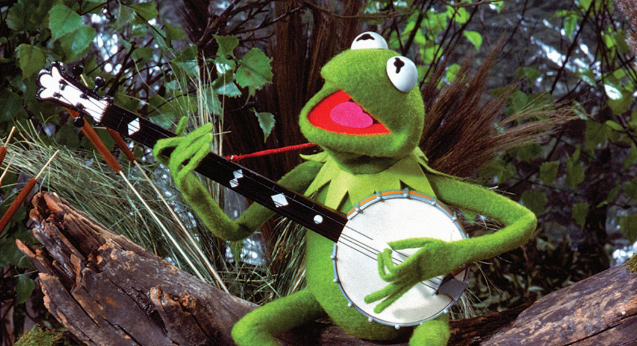
That’s awesome. Once you got through those initial discussions and into the planning of this trip, was there a moment where everyone actually kind of realized “wow, we’re going all the way to New Zealand to do this show”? I mean, once it moved out of the theoretical phase.
I think we’ve been asking that regularly ever since. It starts getting real when you’re having these conference calls with everyone on the line and just when the details start coming in and it’s like “well, we need Kermit to bring his banjo” and “we need this to happen”. When it first started, in terms of planning the concert at least, it was just a couple of calls with me and Bret and Nick and we’re making some ideas and writing up a treatment. And then when it starts getting into the detail of well, we need these props and we’re going to have to build this locally and we’re going to get this, then it starts dawning on you that it’s actually going to happen.
Last week, for example, we had a conference call with the workshop that’s dealing with getting all the puppets ready and we’re like, “Well, we need a decision on this because we’re sending off things to New Zealand on Monday.” Okay, everything has to be in the box by then. We know that there’s a ticking clock now.
When it came to developing the live show with Bret, does that ticking clock provide pressure and what things are different with the fact that it’s being staged here as opposed to in your backyard back home?
It’s really all about how much we can bring and the logistics of that. One puppet doesn’t take up much space but then when you start saying, “Okay, we need this puppet and we need these puppets.” And sometimes – not to give away secrets – but sometimes we have two versions of the same puppet so if they need to change clothes, we can do a quick change without having to actually change the clothes. There’s certain limitations that we just have to work with and part of that is we had to write the show bearing in mind which performers were coming to New Zealand. So there were some characters that we would love to have but we just don’t have access to those performers. So we have to sort of write around that.
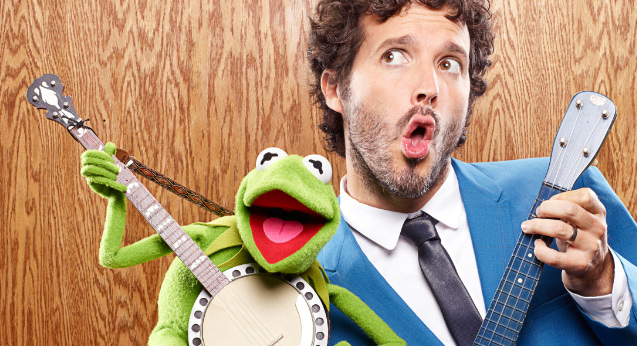
I’ve really enjoyed how vague some of the descriptions of what the live show will be and the way it’s preserving the sense of mystery and discovery for the audience.
We’ve been under strict instructions to keep everything vague. But I can say that there will be live appearances by beloved Jim Henson-created characters and I think that people will not be disappointed. And let me tell you this, I will say that there will be appearances by characters great and small all [laughs]. And beloved Muppets from the world of Sesame Street, and Disney’s classic Muppet characters, and the world of Fraggle Rock are all represented.
It’s lovely to hear you walk that tightrope of what you’re able to do for us.
Well, you know we’ve developed the script in a way where, as we go through the show, we are meeting different characters, and we are getting different surprises. So I think that we want to try and, we want to be able to promote the show, but we also don’t want to give away any surprises that the audience will have when they see certain characters come to life in front of them.
That’s exciting, and that’s a really good approach. Outside of the show, considering this is a pretty small country, and Wellington’s not an enormous city, you guys are establishing quite a strong footprint for a couple of weeks. It’s not just setting up a gig that happens for a night and moves on. For yourself and for people coming down, are you looking forward to that time being a little bit more extensive than just a touring show that comes in and leaves the next day?
Yeah, I think one of the things is that this gives us a little bit of momentum, having a couple of weeks to really get going. When we did our screenings at ACMI in Melbourne, I was there only for about four or five days, and word started building that this was happening, and the screenings were sold out, and it happened in a very short period of time, whereas you got the idea that people wanted to continue this on, they wanted more. So I think that having a little bit of time, and also having workshops, having live panels with the performers and the designers and so forth, having more than a concert element, having the screenings, it really makes it a very big event. And it’s something that we’re very seldom able to do. We do elements of things. We have a touring Henson exhibit, and we have a couple of permanent Henson exhibits, and sometimes we do screenings, but usually, we don’t do live performance as an element of that. And sometimes we’ll do a live performance like we did at Carnegie Hall. But it doesn’t have workshops. So this is a very unique situation where we’re able to do an onstage entertainment, we’ll be able to do screenings, we’re able to do things that take us behind the scenes. It’s really a big full package that we very seldom get to do in one big thing.
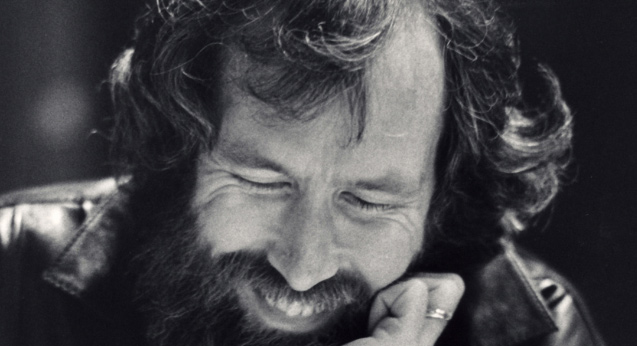
It’s an exciting prospect, we’re really lucky to have you here. One of the earliest events happening this weekend is a screening of ‘The Muppet Movie’. Is there one particular crowd-pleasing moment in that film that you expect audiences to go nuts for when they see it happen on the screen?
The Muppet Movie is a very, very special film, and I think that there are a lot of different moments. There’s so many different things that different people respond to. Some people respond to all the different guest stars. And some of the younger people respond mostly to the moments where Kermit is riding a bicycle, or when he’s playing the banjo at the very beginning. It’s one of those films where, depending on who’s watching it, you get a totally different reaction. And one of the joys of what I get to do in presenting these screenings and these films, is that I get to see the adults who grew up with it expose this material to their children, sometimes for the first time. And I get to see people see The Muppet Movie and see all of these other films both for the fiftieth time, and for the first time. There’s nothing like really seeing people see a movie like that, a classic film, and see them enjoying it for the first time.
So, I think for me, it’s that opening scene of Kermit playing the banjo. Really, you look back in the history of film, and this was 1979, this is really the first time where, with the exception of possibly the Thunderbirds, this is the first time where you have puppet characters carrying a film of this magnitude. And I think from a perspective on film history, I think Kermit playing the banjo at the beginning of The Muppet Movie is really, really special. It’s a special moment, because it really paved the way and showed that these little characters, these little characters of fleece and fur can be real enough to headline a film and take the audience on this emotional journey.
The Muppet Movie – playing at 1pm April 14th at the Embassy – is just part of the extensive film programme at the Jim Henson Retrospectacle.
Click here for full info on their screenings, workshops and live events in Wellington this month.

